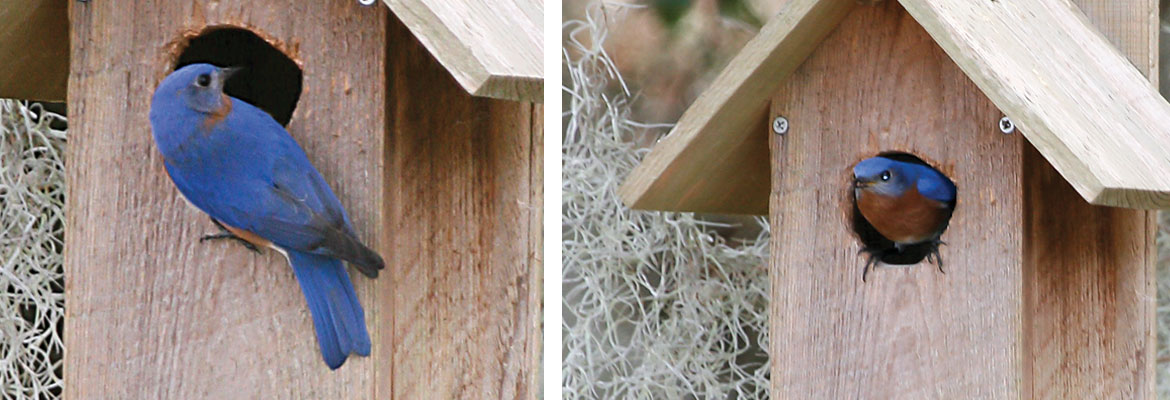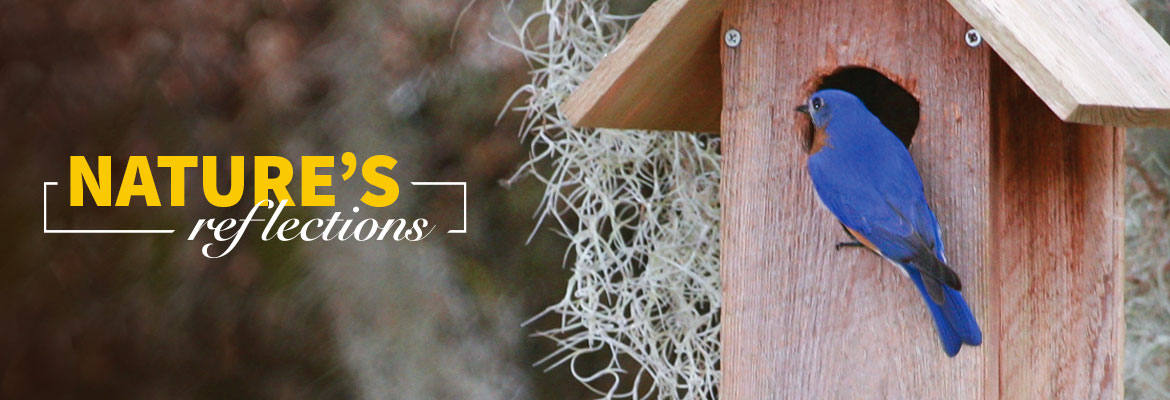Nature’s Reflections – Florida’s Eastern Bluebird
Florida’s Eastern Bluebird
Beautifully colored songbirds in the Thrush family
The Eastern Bluebird (Sialia sialis) is a year-round resident of Florida and a familiar species throughout the eastern United States. Two subspecies occur in Florida: Sialia sialis in the Panhandle and northern peninsula and Sialia sialis grata from Lake County southward. It is often seen perched in a hunched position on a fence, post or tree limb, where it darts to the ground and back in its quest for insects.
It is easily spotted along roadsides, wooded and farming areas where it is highly favored by farmers and residents who put up nesting boxes along fence rows in open pastures, and in backyards. Adult males have a vibrant blue back, head and tail; a chestnut colored breast; and white belly. Females are duller, gray with a hint of blue, and young birds are spotted.

It has been clocked at seventeen mph. During summer, bluebirds feed primarily on insects and earthworms. It is a bug-catching machine. Its winter diet is heavily dependent on a variety of wild berries. In the non-breeding season, bluebirds form small flocks. During cold weather, several may roost together in a nest cavity to stay warm. Its lifespan is six to ten years.
As a cavity nester, it must compete for choice spots with both native and non-native birds. It is particularly fond of nesting boxes. This has helped stem a notable decline in its numbers in Florida. Nesting takes place between February and August. Four to five pale blue eggs are laid in a simple cup made up of woven pine needles and grasses. Eggs hatch in two weeks and the young fledge two to three weeks later. One pair may raise two or three broods a year. Juveniles remain with their parents during the entire nesting season, making up rather large family groups by the end of the summer. There is no single perfect, ultimate bluebird nest box and many designs are used with success. However, perches should never be used on the nest boxes. Bluebirds do not need them and perches only facilitate harassment by non-native species. If possible, build or purchase a box that is North American Bluebird Society (NABS) approved.
Column & photo by: Sandi Staton






